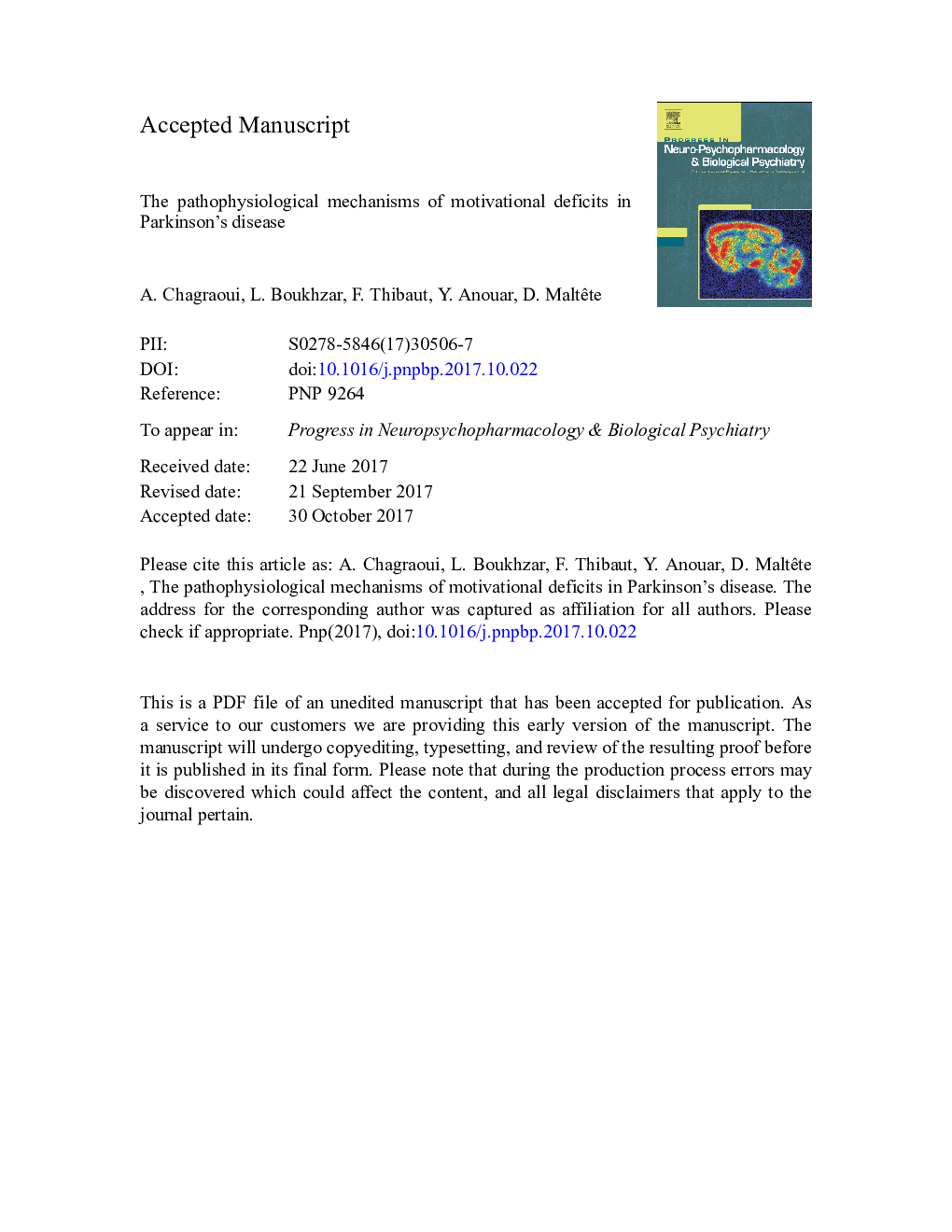| Article ID | Journal | Published Year | Pages | File Type |
|---|---|---|---|---|
| 8537618 | Progress in Neuro-Psychopharmacology and Biological Psychiatry | 2018 | 55 Pages |
Abstract
Parkinson's disease (PD) is a progressive degenerative disorder that leads to disabling motor symptoms and a wide variety of neuropsychiatric symptoms. Apathy is the most common psychiatric disorder in the early stages of untreated PD and can be defined as a hypodopaminergic syndrome, which also includes anxiety and depression. Apathy is also considered the core feature of the parkinsonian triad (apathy, anxiety and depression) of behavioural non-motor signs, including a motivational deficit. Moreover, apathy is recognised as a distinct chronic neuropsychiatric behavioural disorder based on specific diagnostic criteria. Given the prevalence of apathy in approximately 40% of the general Parkinson's disease population, this appears to be a contributing factor to dementia in PD; also, apathy symptoms are factors that potentially contribute to morbidity, leading to a major impairment of health-related quality of life, thus stressing the importance of understanding the pathophysiology of this disease. Several studies have clearly established a prominent role for DA-mediated signals in PD apathy. However, synergistic interaction between dopaminergic impairment resulting from the neurodegenerative process and deep brain stimulation of the subthalamic nucleus may cause or exacerbate apathy. Furthermore, serotoninergic mechanism signalling is also likely to be of importance in this pathophysiology.
Keywords
DBSApathy Evaluation ScaleLARSD3RDRNDLPFCD2R5-hydroxytryptamineMDS6-Hydroxydopamine5-HT6-OHDAAesimpulse control disorderattention deficit hyperactivity disordersMRIADHDdeep brain stimulationMagnetic resonance imagingfunctional magnetic resonance imagingfMRIICDDopaminebasal gangliadorsolateral prefrontal cortexanterior cingulatedorsal raphe nucleusD3 dopamine receptorD2 dopamine receptor
Related Topics
Life Sciences
Neuroscience
Biological Psychiatry
Authors
A. Chagraoui, L. Boukhzar, F. Thibaut, Y. Anouar, D. Maltête,
